
Lister's Glossop Advertiser and Monthly Herald masthead |

Lister's Glossop Advertiser and Monthly Herald masthead |

The Record masthead |
 |
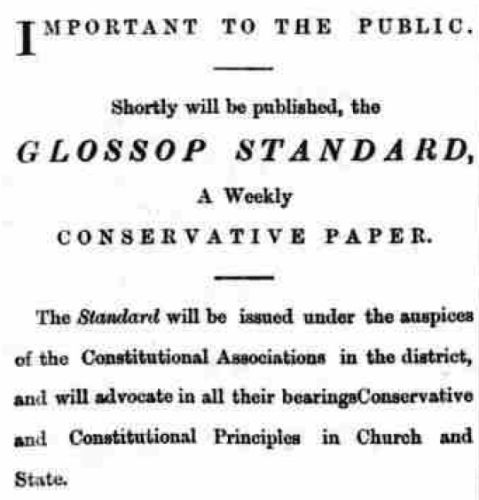 |

Chronicle masthead |
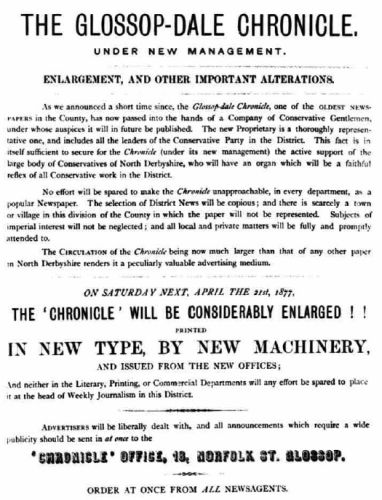 |
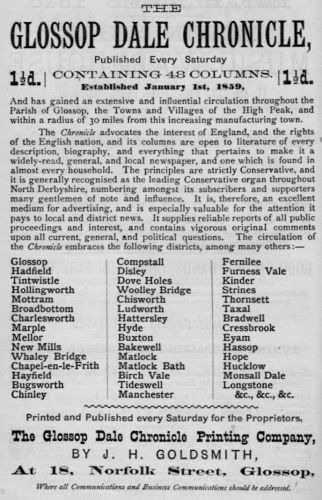
Chronicle advert, 1878 directory |
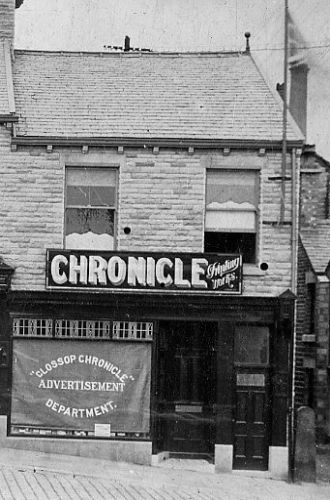
Chronicle office, 1909, Norfolk Street |
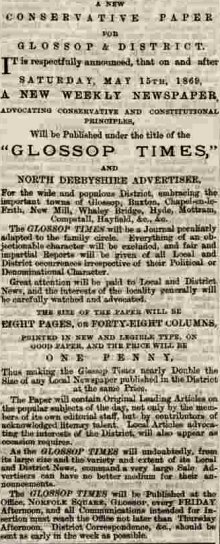 |

Advertiser masthead |
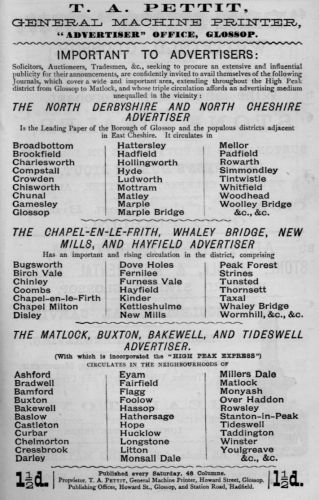
Pettit advert 1878 directory. |